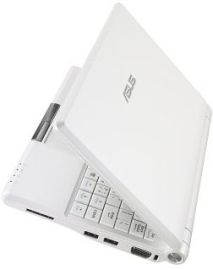Tech
Every device has its own place
In the last year or so, ultramobile PCs (UMPCs) have hogged much limelight as an upcoming segment of personal computing, offering greater portability compared to laptops, and better performance compared to PDAs. To top it off, several offerings in the market today come at a sub-US$500 price tag.

In the last year or so, ultramobile PCs (UMPCs) have hogged much limelight as an upcoming segment of personal computing, offering greater portability compared to laptops, and better performance compared to PDAs.
To top it off, several offerings in the market today come at a sub-US$500 price tag. In fact, Intel believes that UMPCs will replace high-end smartphones.
When I caught my first glimpse of a UMPC some months back, I considered its usefulness as a device for journalists to more comfortably type and file stories on-the-move. While I could do the same with my PDA, when I connect it to my full-size wireless keyboard, the bigger screen size on a UMPC is a lot more conducive for my eyes.
Still, I'm not convinced yet that I can throw out my PDA for a UMPC. Why? One key reason: my PDA offers "instant-on", which the UMPC does not. I don't fancy having to wait 30 seconds just to enter details of an appointment in my calendar… Thanks to my ageing memory cells, by the time the device boots up, I might have forgotten the date/time of my appointment.
At this week's launch of the Asus Eee PC 900 here, I asked the company's country manager Joseph Hoo, what he thought of UMPCs' place in the business realm.
He acknowledged that the Eee PC has yet to make significant inroads among professionals. Most of the 1 million Eee PCs shipped worldwide since its launch in December 2007, were purchased for leisure or as an extension to home PCs, Hoo said.
According to feedback from Asus customers, he explained that the UMPC hasn't proven popular among professionals primarily because the previous model wasn't available on the Windows platform. Also, its smaller screen size was a drawback as was its small storage capacity.
Hoo is hoping that the Eee PC 900, which will be available in Singapore this weekend, can address some of these concerns. Priced at S$798, the UMPC now sports a wider 8.9-inch display screen and is available on both the Windows and Linux platforms, with 12GB and 20GB storage space, respectively.
Hoo agreed that instant-on capability is a key factor that UMPCs have yet to address, but noted that Asus is already looking at this issue and believes this will be an important enhancement for future Eee PCs.
He added that depending on market demands, the company will consider building security components such as biometrics, into the UMPC to encourage business users to start buying the device.
Asus is targeting to sell 3.8 million units by the end of 2008, but Hoo said the company is confident of reaching its internal target of 5 million. In addition, he said there may well be a new Eee PC offering within the next five months. "It's been doing well, which is why we came up with another model so soon after the previous launch in December. My gut feel is we'll launch another model within the next five months," he said.
It remains to be seen whether mobile professionals will hop on the UMPC wagon, but I'm not quite convinced that these devices will serve as a replacement to PDAs, smartphones or any other mobile computing gizmos, for that matter.
I personally like my mobile phones small and slim, but prefer to browse through my schedule and appointments on a bigger screen display. For this reason, I prefer to keep my PDA and mobile phone separate and have never quite taken to PDA phones like some of my friends have--I still don't understand why they're happy to squeeze a PDA phone into the pockets of their jeans, when they can sit more comfortably with a slimmer mobile phone.
Future technological advancements may offer better ways to smoothen the convergence between the various mobile devices, but there could very well remain a market each for mobile phones, smartphones, PDAs and UMPCs. And there's really nothing wrong in that.
I believe every device has its place in the market, simply because every one has likes and dislikes that are unique to their personality and individual needs.
 Asus Eee PC 900 |